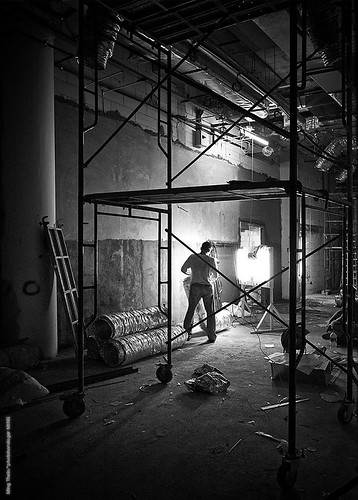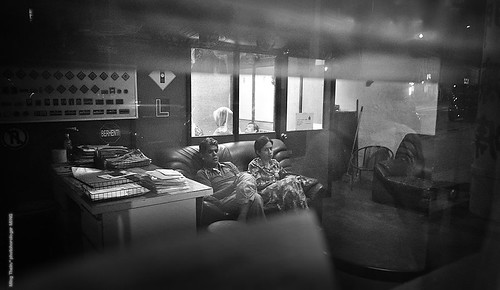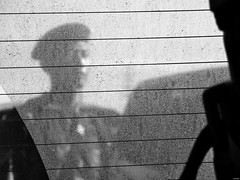
Wet reflections
Leica M8, Zeiss ZM 21/2.8 Biogon

The dress
Leica M8, Zeiss ZM 21/2.8 Biogon

Night shift
Leica M8, Zeiss ZM 21/2.8 Biogon

Tong Nam Piles Clinic and Driving School
Leica M8, Zeiss ZM 21/2.8 Biogon

Working
Leica M8, Zeiss ZM 21/2.8 Biogon
Lenses are quite a personal thing, it seems. Since in this day and age it's really quite difficult to buy duds, we are left in the enviable position of selecting whatever we like the best. Case in point: the Zeiss ZM 21/2.8 Biogon. Launched together with the Ikon rangefinder, and a direct shot across the bows of the Leica 21/2.8 Elmarit-M ASPH, it's an interesting piece of glass: plenty wide on full frame (academic) and pleasantly wide at 28mm equivalent on the M8. It's also a third the price of the Leica, and doesn't seem to give up anything much in any area, actually.
So what does one get for one's money? Solid, all metal construction with no slop or loose bits anywhere; a nice positive clicky aperture ring in 1/3rd stops (which is actually annoying because every other M mount lens uses half stops, and the meter on the M8 deals with half stops) and a very smooth, precise focusing ring with a small nubbin of an afterthought for a tab - actually it's useful to determine the position of the focusing ring, not so much trigger focusing like the Leica tabs. It also has enough helicoid to focus down to 0.5m, though it's only coupled to 0.7m, of course. The hood is bayonet fit, but idiotically, on the M8, blocks the rangefinder patch despite having a cutout - I bet it's perfect on the Ikon, though. The filter thread is even a considerate 46mm, which lets you use standard Leica UVIR filters (unlike those darn Voigtlanders which use a non-Leica 52 or 58mm, which are impossible to fit without stepping rings or resorting to B+W).
So what about the optics? Superb. Truly superb. I'd put it comfortably in the same league as the legendary Leica 35/2 Summicron-M ASPH and the Leica 50/1.4 Summilux-M ASPH. It's that good. Possibly even slightly better than the 21/2.8 Elmarit-M ASPH wide open in the corners, actually. It also has a wonderful way of drawing - sharp yet creamy at the same time. It's a microcontrast and bokeh thing, of course. The backgrounds are just defocused enough to know they're not the subject, and the transition from in focus to out of focus is well defined. Microcontrast is excellent, and there isn't any trace of chromatic aberration nasties anywhere. Just take a look at the image samples above.
There shouldn't be any reason NOT to like this lens, right?
Well...it seems that Fuzzbucket and I differ on this one - I love the 21 biogon - but a week later, he's contemplating swapping it for a 90 Summarit. Framing is admittedly tricky - long enough to require the rangefinder to focus, but wide enough that the FOV is somewhat larger than the viewfinder of the M8 - I use the 24 line and add a little. Maybe that's the difference - I used 17mm (also 28mm equivalent) a lot when I shot on DX, so I have a good feel for the framing; Fuzzbucket never shot DX. Conversely, I briefly owned a 90/2 Summicron-M, but never got along with that - telephoto lenses on the M8 just aren't very practical, despite my favourite DX/ FX focal length being 105mm. (I think I've used just about every major version of the Nikon 105 - the AI 105/2.5, AIS 105/1.8, AF DC 105/2, AFD 105/2.8 Micro, AFS 105/2.8 Micro VR N...the AIS 105/1.8 had the best character of the lot, IMO.)
And there's the 50mm saga - but that's another story.
Each to his own...




No comments:
Post a Comment